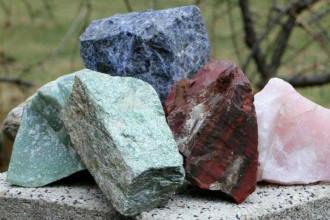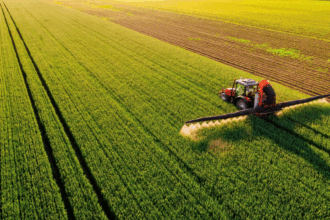Money and credit are the foundation of all economic activities in our daily lives. Every person, whether a farmer, shopkeeper, worker, or student, depends on money and credit in one way or another. In earlier times, people exchanged goods directly, but with the introduction of money, trade became easier and more efficient.
Today, money and credit are deeply linked — money helps in buying and selling, while credit helps people meet their needs and invest in new opportunities. The use of money and credit affects not only individuals but also the overall growth of the economy.
Understanding how money and credit work, where they come from, and how they impact people differently helps us see the strengths and inequalities within our financial system. This chapter also describes how banks provide money and credit. This chapter explores the importance of money and credit in shaping our economic life and their role in promoting inclusive development.
Introduction: Money and Credit
1. Money in everyday life
- Money and credit are an important part of our daily lives and the modern economy.
- Money plays a central role in our daily economic activities.
- Almost every transaction of goods and services involves money.
- Without money, exchange would be difficult and time-consuming.
2. The problem of Barter system
- Earlier, people exchanged goods directly.
- Main problem: Double coincidence of wants- both parties had to want what other offered.
- This system was inconvenient and limited trade.
3. Emergence of money
- To overcome the limitations of barter, money was introduced as a medium of exchange.
- Money simplified trade by acting as a common measure of value.
4. Functions of money
- Medium of exchange- goods/services can be easily bought and sold.
- Measure of value- helps compare the value of different goods.
- Store of value- can be saved and used in the future.
5. Introduction to credit
- Along with money, credit also plays an important role in economic life.
- Credit means borrowed funds that must be repaid with or without interest.
- Credit helps people meet needs, start businesses and grow economically.
Topic-1: Money as a medium of exchange
1. Barter System (Before Money)
- People exchanged goods for goods directly.
- Main problem: Double coincidence of wants.
- This made trade difficult and limited.
2. Need for money
- To remove the difficulties of barter, money was introduced.
- Money acts as a medium of exchange- it can be used to buy goods/services easily.
3. Advantages of money over barter
- No double coincidence needed- seller can accept money even if he doesn’t want the buyer’s goods.
- Standard measure of value- prices of goods/services can be fixed and compared.
- Convenient and portable- easier to carry and store than goods.
- Expand trade- allows buying and selling across regions and countries.
4. Examples in daily life
- A farmer sells crops in the market and receives money.
- With that money, he can buy seeds, tools, clothes or anything else he needs.
- Money helps in connecting producers and consumers smoothly.
Topic-2: Modern Forms of Money
1. From Barter to money
- Earlier: Barter system was followed.
- Later: Use of metallic coins (gold, silver, etc.)
- Now: Paper notes and coins issued by the government and the Reserve Bank of India (RBI).
2. Legal Tender Money
- Money issued by the RBI and government is called legal tender money.
- It must be accepted as a medium of payment by law.
- Example: Rupee notes and coins.
3. Modern Forms
- Paper currencies and coins:
- Issued by the RBI (except one rupee coins and notes- issued by Government of India).
- Guaranteed by the central authority- builds trust.
- Deposits with banks:
- People deposit their savings in banks.
- These deposits are demand deposits- can be withdrawn anytime by cheque/ATM.
- Cheques:
- A paper instructing the bank to pay money from an account.
- Helps in cashless transactions.
- Digital/Plastic Money:
- Credit cards, debit cards, mobile wallets (Paytm, Google Pay, etc.)
- Convenient, fast and widely accepted in modern economies.
4. Why modern money works?
- People trust the currency note because it is backed by the RBI.
- Value of money is not from metal but from government guarantee and public trust.
Topic-3: Cheque Payment
1. Meaning of cheque
- A cheque is a paper instructing the bank to pay a specific amount of money from the account of the person who writes the cheque (drawer) to the person in whose name the cheque is issued (payee).
2. How cheque payment works?
- Account holder (drawer) issues a cheque to someone.
- The receiver (payee) deposits the cheque in their bank.
- The bank transfers money from drawer’s account to payee’s account.
- No physical cash is needed- payment is done through bank records.
3. Advantages of cheque payment
- Safe and convenient- no need to carry large amount of cash.
- Proof of payment- serves as a written record.
- Widely accepted- used for business, salaries and big transactions.
- Promotes cashless transactions.
4. Limitations
- Only those with bank accounts can issue or receive cheques.
- Processing may take time compared to instant cash/digital payment.
Topic-4: Loan Activities of Banks
1. Deposits and loans
- Banks accept money from people as deposits.
- A part of these deposits is kept aside as cash reserves to meet withdrawal needs.
- The remaining deposits are given out as loans to borrowers.
2. How banks earn?
- Banks charge higher interest on loans.
- They pay lower interest on deposits.
- The difference between these interest rates is the main source of income for banks.
3. Role in Economy
- Banks act as a link between depositors and borrowers.
- Depositors: earn interest and keep money safe.
- Borrowers: get funds or business, investment, agriculture, or personal needs.
- This promotes investment, production and development in the economy.
4. Key Points
- Banks cannot use all deposits for lending (must keep reserve).
- Credit created by banks helps circulate more money in the economy.
- Bank loans play a vital role in economic growth.
Topic-5: Two Different Credit Situations
1. Helpful Credit
- Meaning: Borrowed money/loan helps the borrower increase income and improve livelihood.
- Example:
- A farmer borrows money for seeds, fertilisers, irrigation.
- Good harvest – he sells crops – earns more than loan amount – repay loans easily – gains profit.
- Result: Credit improves condition of borrowers.
2. Harmful Credit
- Meaning: Loan leads to burden if income does not increase or losses occur.
- Example:
- A farmer take loan for cultivation.
- Crop fails due to drought/pests.
- He cannot pay loans – falls into debt trap.
- Result: Credit worsens conditions, increases poverty and stress.
3. Conclusion
- Credit has two sides:
- Constructive when used productively and repaid easily.
- Destructive when it creates debt and losses.
Topic-6: Terms of Credit
1. Meaning
- When a loan is given, it is never free.
- The terms of credit include the details of the loan agreement between the lender and the borrower.
- These terms must be agreed upon by both parties.
2. Components of Terms of Credit
- Interest Rate: The extra amount borrower pays for using lender’s money.
- Collateral: An asset (land, house, vehicle, etc.) pledged by borrowers against the loan. If the borrower fails to repay, the lender can sell the asset.
- Documentation: Papers and records required for loan approval (identity proof, land records, etc.)
- Mode of Repayment: The way and time period in which the loan has to be repaid.
3. Variation of Terms
- Terms of credit vary depending on:
- Nature of lender (formal and informal sector).
- Borrower’s background (rich/poor; landowner/landless).
- Example: Banks may demand proper collateral and documents, while moneylenders may give loans quickly but at very high interst.
Topic-7: Variety of Credit Arrangements
1. Meaning
- Credit (loans) can be obtained from different sources.
- The arrangements (rules, interest, collateral, repayment) vary depending on the source.
2. Types of Credit Arrangements
- Formal Sector Credit:
- Sources: Banks and Cooperatives.
- Features:
- Require proper Documents and collateral.
- Charge lower, regulated interest rates.
- Provide safer and more reliable loans.
- Example: Farmers takes a crop loan from a bank.
- Informal Sector Credit:
- Sources: Moneylenders, traders, employers, relatives, friends.
- Features:
- Easy availability, less paperwork.
- Often no collateral required.
- Usually very high interest rates.
- Can lead to debt trap.
- Example: Small farmer borrowing from a village moneylender.
- Other Arrangements:
- Traders: Advance money or inputs to farmers, repayment after harvest.
- Employers: Provide wage advances to workers.
- Self Help Groups (SHGs): Members pool savings and provide loans to each other at low interest.
Topic-8: Formal Sector Credit in India
1. Meaning
- Formal Sector Credit refers to loans provided by organised institutions.
- These institutions are regulated by the Reserve Bank of India (RBI).
2. Sources
- Commercial Banks.
- Cooperative societies.
- Other government-licensed financial institutions.
3. Features
- Regulated by RBI: interest rates and functioning are supervised.
- Low an reasonable interest rates compared to informal sector.
- Proper documentation and collateral usually required.
- Legal and safe: protects borrowers from exploitation.
- Provide both short-term and long-term loans for farming, business, housing, education, etc.
4. Importance
- Helps in development of agriculture and industries.
- Reduces dependence on informal lenders (moneylenders, traders).
- Encourages investment and economic growth.
- Provides a sense of security to borrowers.
5. Limitations
- Not easily available to poor households (lack of collateral, documents).
- Richer farmers and big businessmen benefit more.
Topic-9: Formal and Informal Credit- Who gets What?
1. Distribution of credit
- In India, credit is distributed unequally.
- Rich households- mostly get loans from the formal sector (banks, cooperatives).
- Poor households- mostly depend on the informal sector (moneylenders, traders, employers).
2. Reason for unequal access
- Formal sector requires collateral, documents, and regular income proof.
- Rich farmers, traders, and big businessmen can provide these- so they get easy access.
- Poor households lack assets and documents- so they are denied formal loans.
- Hence, they turn to informal sources.
3. Consequences
- Formal Credit:
- Low interest, safe, increases income and investment.
- Helps in economic growth.
- Informal Credit:
- Very high interest rates.
- Can lead to debt trap and poverty.
- Increases inequality between rich and poor.
Topic-10: Self Help Groups of the poor
1. Meaning
- Small groups of poor people (15-20 members), usually women, who come together to save money and provide credit to each other.
- Based on mutual help and trust.
2. Functions
- Members save regularly (small amounts).
- Savings are pooled and given as small loans to members for needs (health, education, farming, etc.)
- Loans are given at low interest rates compared to moneylenders.
- After running successfully for some time, SHGs become eligible to take bank loans in group’s name.
3. Advantages
- Easy access to credit for the poor without collateral.
- Low interest- protects from exploitation by moneylenders.
- Promotes self employment (small businesses, farming, craft work).
- Encourages regular savings habit.
- Builds confidence, unity and women empowerment.
4. Importance
- SHGs link poor with formal banking system.
- Play a vital role in reducing poverty and dependence on informal credit.
- Strengthen the collective voice of the poor in society.
Conclusion
Money and credit are the lifelines of a modern economy. They influence every aspect of our daily life—from production and trade to consumption and savings. The proper use of money and credit helps people improve their living standards, start businesses, and contribute to economic growth. However, unequal access to money and credit often widens the gap between the rich and the poor.
While formal sources like banks and cooperatives provide safe and affordable loans, many still depend on informal lenders who charge high interest. Therefore, it is important to make formal money and credit facilities available to all sections of society, especially the poor.
Self Help Groups and cooperative systems are playing a major role in this process. Overall, money and credit together form the foundation of all economic activities in society. In short, money and credit not only drive economic activities but also shape the fairness and inclusiveness of development in our country.
- Money and credit are not just tools of exchange — they are the heartbeat of every economy.
- Understanding money and credit helps us see the balance between opportunity and risk in economic life.
- Money and credit together form the invisible thread that ties every part of the economy.
- The story of money and credit is the story of trust, growth, and human ambition.
- Money and credit can be bridges to progress or barriers to equality — it depends on how they’re used.
- Understanding money and credit is like understanding the pulse of the economy — steady, vital, and ever-moving.
Full Chapter Explanation
Detailed notes of other chapters:
Class-10th Economics Chapter-1 Development (NCERT Notes)
Sectors of Indian Economy: Class 10th Economics Chapter-2 ( Easy NCERT Notes )






